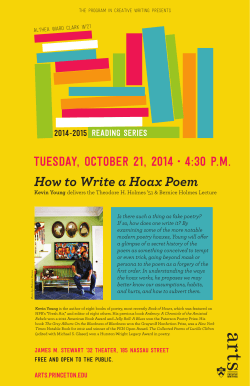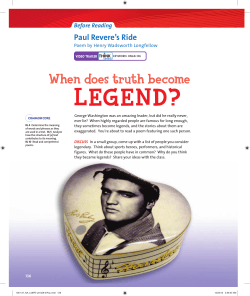
"The Children's Hour"
"The Children's Hour" by Henry Wadsworth Longfellow Between the dark and the daylight, When the night is beginning to lower, Comes a pause in the day's occupations, That is known as the Children's Hour. I hear in the chamber above me The patter of little feet, The sound of a door that is opened, And voices soft and sweet. From my study I see in the lamplight, Descending the broad hall stair, Grave Alice, and laughing Allegra, And Edith with golden hair. From www.MaineMemory.net, item 10528, courtesy of Maine Historical Society A whisper, and then a silence: Yet I know by their merry eyes They are plotting and planning together To take me by surprise. A sudden rush from the stairway, A sudden raid from the hall! By three doors left unguarded They enter my castle wall! They climb up into my turret O'er the arms and back of my chair; If I try to escape, they surround me; They seem to be everywhere. “The Children’s Hour” by Arnold Genthe. Courtesy of http://memory.loc.gov They almost devour me with kisses, Their arms about me entwine, Till I think of the Bishop of Bingen In his Mouse-Tower on the Rhine! Do you think, O blue-eyed banditti, Because you have scaled the wall, Such an old mustache as I am Is not a match for you all! I have you fast in my fortress, And will not let you depart, But put you down into the dungeon Integration of Longfellow’s Poetry into American Studies Created by Mary Moore and Dana Anderson ©2005 Maine Memory Network Page 1 of 3 In the round-tower of my heart. And there will I keep you forever, Yes, forever and a day, Till the walls shall crumble to ruin, And moulder in dust away! Enrichment Links: Taking pictures on the battlefield as recreation in the Civil War: http://www.cr.nps.gov/museum/exhibits/gettex/photo1.htm Letter of Alexander Graham Bell referencing “after the children’s hour” http://memory.loc.gov/cgibin/query/r?ammem/magbell:@field(DOCID+@lit(magbell03800206)) Integration of Longfellow’s Poetry into American Studies Created by Mary Moore and Dana Anderson ©2005 Maine Memory Network Page 2 of 3 Central guiding questions: 1. What part(s) of this poem reflect Henry Wadsworth Longfellow’s attempt to define American identity? 2. What is Longfellow’s message in his poem and is this message still relevant today? 3. Looking at his message, what qualities and values as a person do you think HWL lived by? 4. Describe Longfellow’s voice in this poem and how does it reflect his message? 5. Which images in the poem strengthen/illuminate Longfellow’s message? 6. What traditional poetic conventions (i.e. rhyme, simile, meter, etc.) can you identify in this poem? Do they enhance your appreciation for the poem? Integration of Longfellow’s Poetry into American Studies Created by Mary Moore and Dana Anderson ©2005 Maine Memory Network Page 3 of 3
© Copyright 2025





















